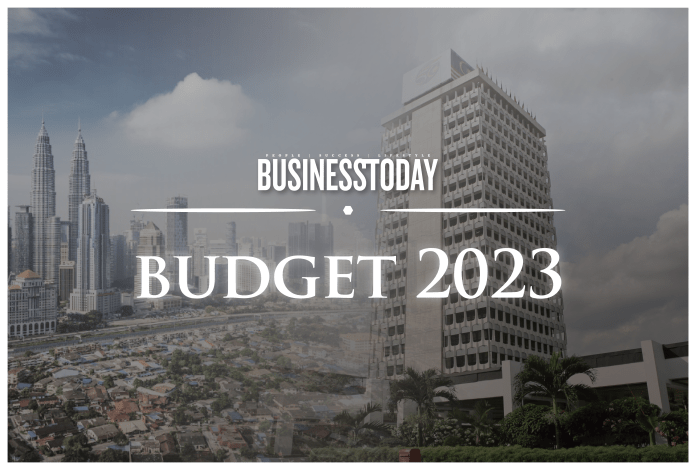RHB research expect that there will be no significant incentives or allocations for certain sectors of the Malaysian economy.
Property
RHB Researc does not think the Government will announce any to further incentives to stimulate the housing market, as it only announced the Keluarga Malaysia Home Ownership Initiative (i-MILIKI) in July.
The scheme offers a 100% stamp duty exemption for first-time home buyers who purchase properties priced MYR500,000 and below, while properties priced between MYR500,000 to MYR1m will enjoy a stamp duty exemption of 50%.
The exemption is for sale and purchase agreements completed from 1 Jun 2022 to Dec 2023.
Although not exactly the same, we view this i-MILIKI scheme as a continuation of the Home Ownership Campaign that expired in Dec 2021. Together with other industry players in other sectors, they think the developers will also urge the government to resolve the labour shortage issue as soon as possible, so that construction works can progress smoothly without material interruptions.
The labour shortage has been plaguing the property sector and, hence, progress billings and earnings have been negatively affected since late last year.
Meanwhile, they expect the government to introduce more incentives to encourage greater use of the Industrialised Building System (IBS).
In Budget 2021, the government proposed to extend the IBS tax incentive for five years. Companies that produce at least three basic IBS components, or use an IBS system with at least three basic IBS components, would be eligible for an investment tax allowance of 60% on the qualifying capex for five years.
This allowance can be offset against 70% of statutory income every year. With the increasing emphasis on ESG, we think the government may also look into the environmental aspect by providing small grants to developers or waive the stamp duty for buyers of green certified projects.
RHB Research understands that some companies have invested in renewable energy resources such as solar panels. However, to encourage greater energy efficiency, further incentives from the Government are needed.
Construction
The current state of public finances remains tight, considering Malaysia’s total debt-to-GDP ratio of 63.8% as of end Jun 2022 (vs 63.4% at the end of Dec 2021).
While it is likely that a pre-election pump-priming theme could materialise, it may also be skewed more towards smaller-scale contractors.
An association of contractors has urged the government to provide a special stimulus package in Budget 2023 to small contractors that are still facing problems brought on by the COVID-19 pandemic, namely for elevated building material prices, labour shortage, and higher logistics cost.
Meanwhile, the president of the Malaysian Bumiputera Contractors Association stated that the Government could help small contractors by awarding maintenance work and other jobs in government departments.
Based on data published by the Construction Industry Development Board (CIDB), G1 and G2 contractors make up more than half of the total c.103k contractors in Malaysia as at 5 Sep 2022.
In order to benefit this group of contractors, we think allocations may be tilted towards rural infrastructure or maintenance jobs.
In June, the Works Ministry said that it needs an allocation of MYR3.4bn to repair federal roads throughout West Malaysia.
Works Minister Datuk Seri Fadillah Yusof said this included repairing damages, resurfacing, adding extra layers and building new roads – all by next year.
As for East Malaysia, Sarawak Deputy Premier Datuk Amar Douglas Uggah Embas cited that Sarawak has around 3,487km of substandard roads that must be upgraded or rehabilitated to connect rural areas. At the moment, the cost of upgrading 331km of rural roads in Sarawak is roughly MYR5bn.
The aforementioned points tie in well with Datuk Seri Fadillah’s statement made on 11 Sep about focusing on improving road facilities for the people’s safety and comfort.
There could also be a chance of large-scale projects being rolled out, via a public-private partnership (PPP) model. So far, a PPP model is already evident in the tenders for the Mass Rapid Transit 3 (MRT3), where bidders are required to propose financing for the initial two years of construction works worth at least 10% of the contract value.
Therefore, new project rollouts with a PPP model (aside from MRT3) could include flood mitigation aspects – which we believe are of priority, given the flood incidents in Selangor and Kedah.
There should also be some pockets of opportunities from East Malaysia, namely the Sarawak-Sabah Link Road Phase 2 and the Trans Borneo highway, which was approved by the Government in August. While this favours contractors with big balance sheets, the question lies in the effectiveness of recouping the ROI for these works.
The Stormwater Management and Road Tunnel (SMART Tunnel) by the MMC-Gamuda JV has a toll mechanism, but as far as public knowledge is concerned, there seems to be no tolls incorporated in the proposed design for SMART2 project proposed by Gamuda.
Meanwhile, a risk of low private sector construction participation may arise if contractors with strong balance sheets can no longer stomach such funding requirements as they take up more projects later on.









